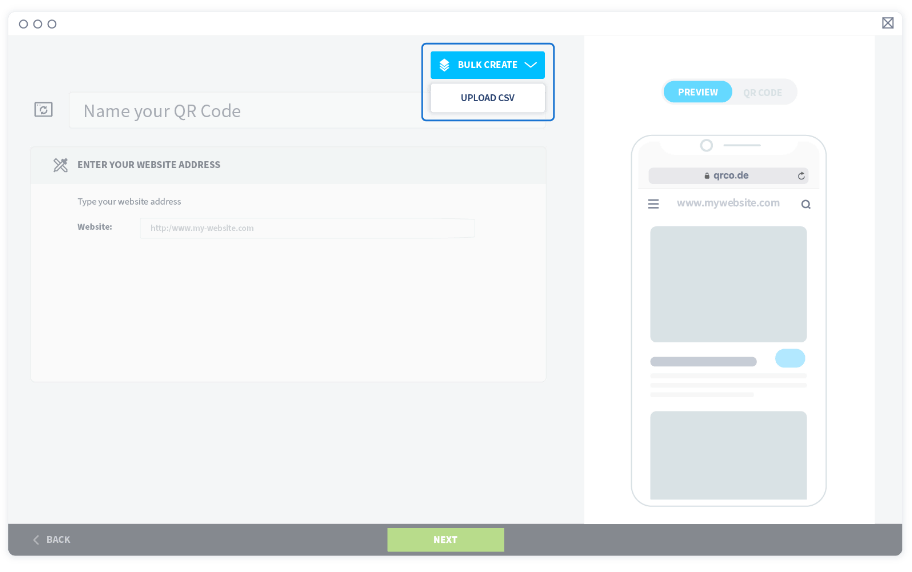- Best Practices ●
- COVID-19 ●
- Industry Trends ●
- Partners ●
- Product ●
How Using QR Codes For Asset Management Makes Asset Tracking Easier
Asset management is vital for any business seeking to improve its customer service, turnaround time, and scalability. And a new generation of tech tools is enhancing the ways businesses approach inventory and asset management.
One of these tech tools isn’t technically new—but it’s seeing a resurgence, especially as a tech-forward yet cost-effective way to modernize asset management: the QR Code.
QR Codes can be scanned by any mobile device (iOS or Android), and they can contain tons of data—including asset data—perfect for managing the asset lifecycle and reducing asset downtime.
Can QR Codes be used effectively for inventory management?
Yes! QR Codes can indeed be used for inventory management, often to impressive results. QR Codes are a great solution for simplifying and digitizing processes as well as streamlining inventory operations.
Many organizations are now creating smart packaging with QR Codes by affixing QR Code labels to packages that machines (and employees) can use to improve logistics. And that’s just the tip of the asset management iceberg.
5 benefits of using QR Codes in asset management
Using QR Codes in asset management delivers powerful results for any organization with physical inventory. Here are five ways QR Codes can improve your asset management efforts.
1. Improved asset tracking
QR Codes have a few advantages over barcodes that improve asset tracking workflows. Specifically, they can hold more data, are quicker to scan, and have built-in error correction so you can still scan them even if they’re dirty or damaged.
Unlike barcodes, Dynamic QR Codes can be updated to reflect new information about an asset without requiring you to create a whole new code from scratch, remove the old label, and affix the new one—which leaves a lot of room for human error.
For example, say that an asset moves from its original warehouse to one in a neighboring city. If you’re using an asset-tracking system, you can easily use a Dynamic QR Code to link to the asset’s page or entry within the system via URL, where you can update location information. This way, your inventory managers know where the asset is at all times.
2. Efficient maintenance scheduling
You can link an asset’s QR Code directly to your asset-tracking system or online database via URL, where information about the asset’s maintenance history or current issues is stored. By tracking maintenance history, it becomes easier to identify patterns regarding how often an asset needs to be serviced and what type of service it needs.
This enables asset managers to make data-driven decisions about when to schedule upcoming maintenance, which can keep you on an efficient preventive schedule, rather than a chaotic reactive schedule.
3. Reduced downtime
QR Codes can link directly to an asset tracking system, reducing the time it takes to solve problems or identify issues with an asset. The result: lower time to resolution and reduced downtime. You can be sure you’ve found the right asset faster, reducing delays due to asset confusion or miscommunication.
4. Enhanced data accuracy
Because QR Codes (including both Static and Dynamic QR Codes) can store much more data about an inventory item, businesses can rely on them for more data points. That means fewer data points left to manual processes and fewer possibilities for introducing errors when copying data from field to field.
5. Editable and versatile
Last, QR Codes are powerful because they can be edited after the fact: With QR Code Generator, you can redirect or reconfigure any Dynamic QR Code whenever you need to. If something wasn’t right about the data when you printed the QR Code sticker and affixed it to the inventory item, that’s OK! You can address the problem later.
There’s also a higher level of versatility here: QR Codes can be used for a wide range of applications, from simple URL redirects to complex connections to asset information systems.
How QR Codes can be used in asset management
Now that we’ve covered why you should use QR Codes in asset management, let’s look at the how. Here’s how businesses with inventory are using QR Codes for asset management.
Asset identification
Many businesses now assign a unique QR Code to each asset (similar to how businesses have used barcodes in the past). This tactic provides a quick and accurate way to identify individual items.
Barcodes can accomplish the same general purpose, but remember: QR Codes can be far more data-rich, containing much more information than any barcode. As your inventory needs grow larger and more complex, QR Codes give you the flexibility and scalability to quickly and accurately identify every asset.
Asset information access
QR Codes also give greater access to asset information. By scanning a QR Code, personnel can access detailed information about an asset. This information could include:
- Asset name
- Item description
- Specifications
- Purchase date
- Maintenance history
- And more
This greater access to information is more or less the same reason QR Codes at trade shows and other venues are effective marketing tools: QR Codes link users to information quickly and easily. Whether that information is a marketing landing page or a dynamic database entry—such as a computerized maintenance management system (CMMS)—the QR Code makes it happen.
Maintenance tracking
QR Codes can also integrate with a business’s CMMS, connecting the scanning individual to maintenance schedules and records within the system.
The QR Code can be attached to the equipment, and when a technician scans it, it opens the URL for the asset’s record in the CMMS. From there, the technician can see when the asset was last serviced and when it’s due for maintenance or update the record if needed.
Compared to looking up serial numbers in a binder, QR Codes are far easier to use, far harder to lose, and an all-around cleaner solution.
Inventory management
QR Codes can also facilitate accurate inventory management when they link to a business’s inventory management databases. The technician can scan the code and open the database via URL to see real-time updates on asset availability, status, and location. This gives asset management teams more visibility and greater asset accountability.
With more accurate, constantly updated information just a quick scan away, your organization can supercharge its inventory management efforts just by switching to QR Codes for asset management.
Scanning and data entry
QR Codes are also used for scanning and data entry. When an asset is inspected, maintained, moved, or checked, all the team member needs to do is scan the QR Code on the asset using a mobile device (smartphone or purpose-built QR Code scanning device). Doing so will automatically pull up asset information from your central database.
Changes can typically be input into that database or information system from the device used to scan the code, giving businesses a quick and easy way to perform data entry in inventory and asset management systems.
How do I create a QR Code for asset management?
Creating a QR Code for inventory management is easy with QR Code Generator.
To get started, simply head to QR Code Generator. Using this service (or QR Code Generator PRO), you can turn just about any digital asset into a QR Code. Of course, if you’re scaling across a large number of inventory items or assets, you won’t want to create these codes individually.
That’s where “bulk create” comes into play.
Using a simple CSV file, you can create and update multiple QR Codes in one action, including Dynamic URL, Static URL, vCard (Static), and Plain Text (Static) QR Codes.
To do this in QR Code Generator, select Create QR Code from the Dashboard. Next, choose the type of QR Code you want to create. Then, look for the Bulk Create button. Select it, then Upload CSV.

This will generate a pop-up that lets you download a ready-made CSV file you can populate with the necessary information. Then upload your completed file, and you’re done!
Need a more detailed guide? Here’s more on how to generate QR Codes in bulk.
Streamline your logistics processes with QR Code Generator
It’s time to evolve your asset management processes by embracing a new generation of tracking. QR Codes are the perfect solution for your inventory management and asset tracking needs, and QR Code Generator PRO is the perfect solution to make it happen—at scale.
Generating QR Codes is easy with QR Code Generator. And with bulk QR Code generation capabilities and an API for even deeper integrations, QR Code Generator PRO is the smart choice for forward-looking businesses.
Ready to streamline your logistics processes, improve ease of use, and step into a better asset management future? Create your free QR Code Generator account today!






 Add custom colors, logos and frames.
Add custom colors, logos and frames.
